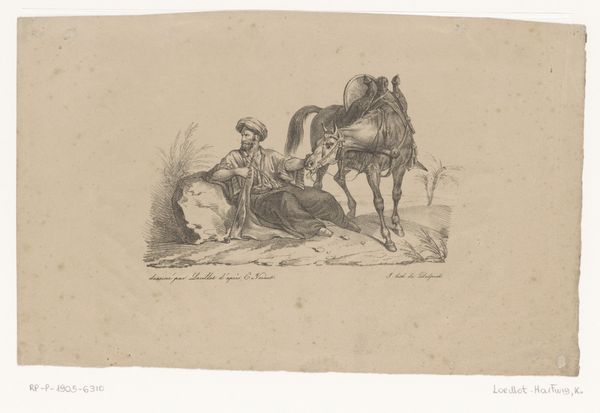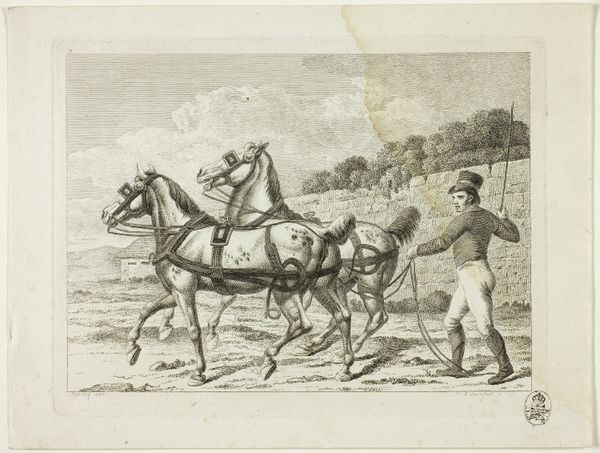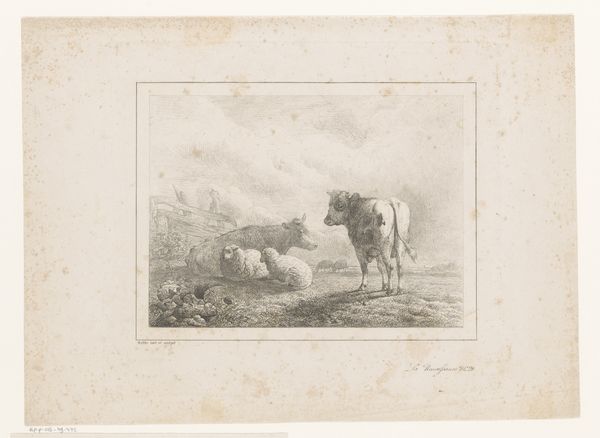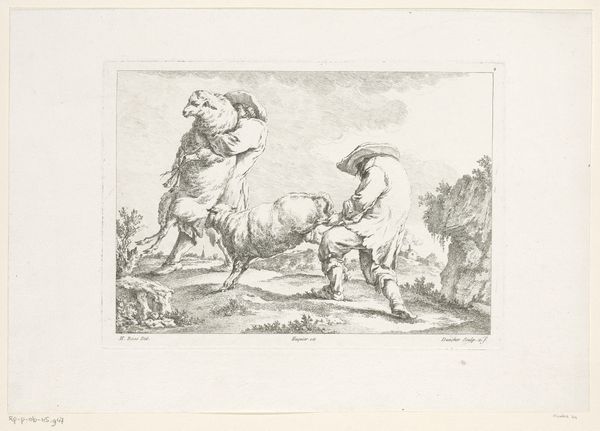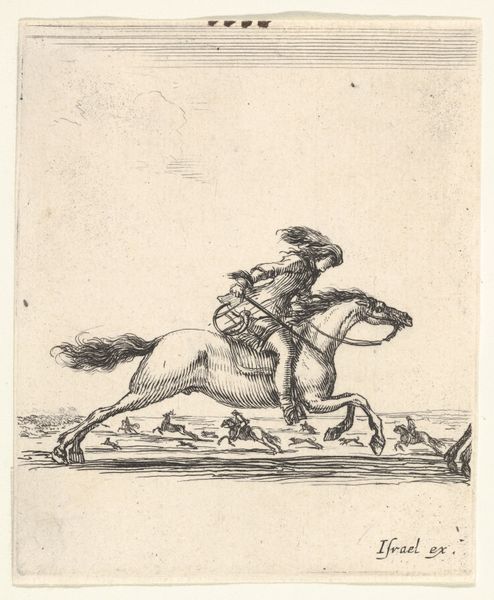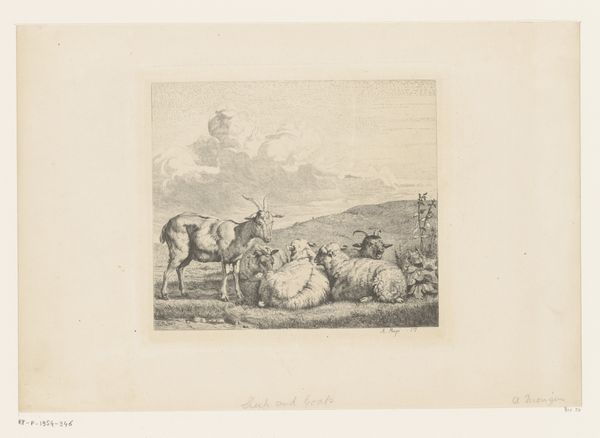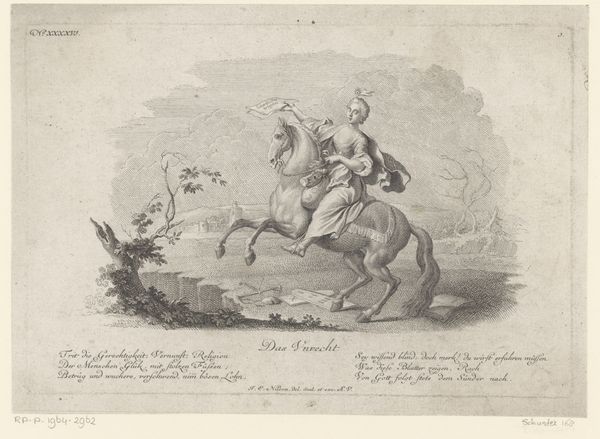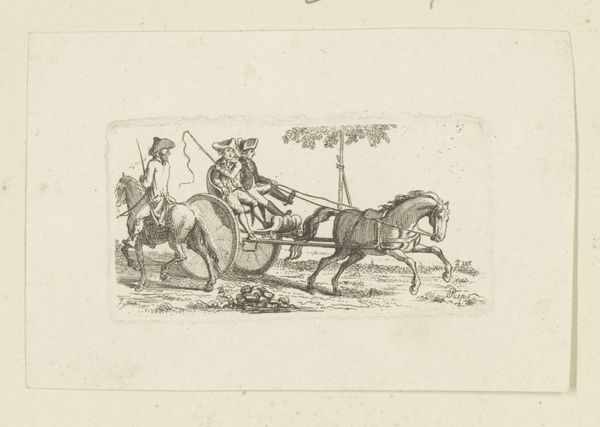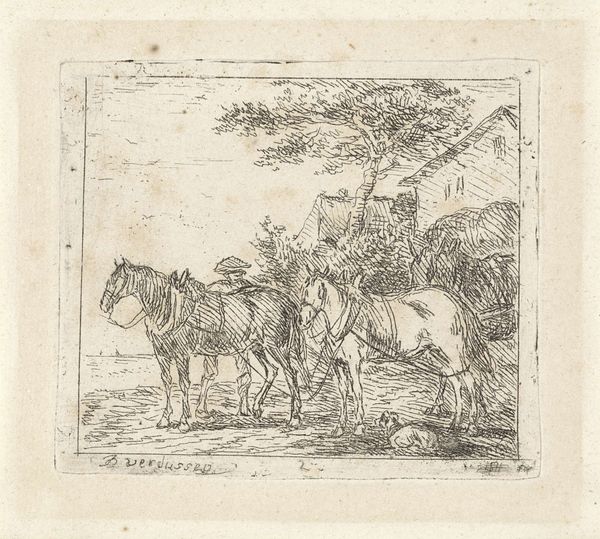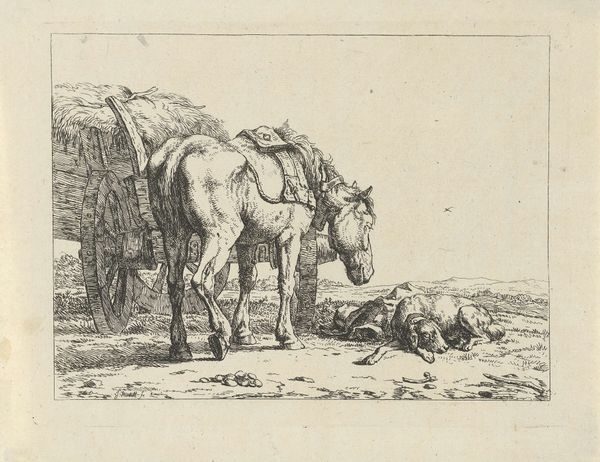
drawing, print, etching, engraving
#
drawing
# print
#
etching
#
caricature
#
dog
#
coloured pencil
#
romanticism
#
horse
#
genre-painting
#
engraving
Dimensions: Plate: 8 5/8 × 11 1/4 in. (21.9 × 28.5 cm) Sheet: 9 1/2 × 13 9/16 in. (24.2 × 34.4 cm)
Copyright: Public Domain
Editor: This is “A Cockney & his Wife going to Wycombe,” an etching and engraving by James Gillray, dating from 1805 to 1840. The figures are so exaggerated—it feels like a commentary on class, but I’m not sure how to unpack it. What do you see in this piece? Curator: This print offers a sharp social critique, very much in line with Gillray's style. Consider the title: the term "Cockney" was often used disparagingly to describe Londoners, particularly those from the working class, marked by their distinct dialect. The journey to Wycombe, then a rural area, represents an attempt at upward mobility or perhaps a temporary escape from urban life. How does Gillray portray that aspiration, or the limitations of it? Editor: Well, they're both caricatured rather unflatteringly. The man is overly thin, and his wife seems excessively large. They appear almost grotesque. Curator: Precisely! Gillray uses caricature to expose societal tensions and prejudices. The exaggerated features mock their pretensions. He seems to be saying they are out of place, the city habits are ill-suited for the country. The underfed horse, the struggling dog – it's all rather bleak. Where do you see the undercurrent of social tension play out in the print? Editor: Perhaps in the contrast between their aspirations and their actual circumstances? They're trying to appear genteel, but their very forms betray them. Is the print commenting on how rigid social roles were at that time? Curator: Exactly. Gillray's art wasn't just humor; it was a form of political and social commentary. By skewering the pretensions of the rising middle class, he challenged the existing social hierarchy. In this way, we might see parallels with how contemporary artists challenge gender norms, or power structures within social-media. Editor: That's a really interesting way to contextualize it. Thanks for the insight! Curator: My pleasure. These prints offer fascinating insights into the complexities of identity, class, and social change.
Comments
No comments
Be the first to comment and join the conversation on the ultimate creative platform.
